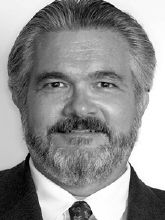This issue of JCO contains a very interesting and, in many ways, disturbing report on the indebtedness faced by today’s orthodontic students. Drs. Dawn Pruzansky, Brittany Ellis, and Jae Hyun Park, all of the Arizona School of Dentistry and Oral Health, surveyed 174 recent graduates and current residents in advanced orthodontic programs. Their aim was to ascertain not only the level of indebtedness the respondents have incurred in attempting to become orthodontists, but how that indebtedness has affected their personal career, practice, and lifestyle decisions. Although the results should not be surprising to most of us, they are still eye-opening with respect to what the specialty may look like in the years ahead.
Without a doubt, the relative income that can be expected by new and future orthodontists is considerably lower than what graduates of previous generations were able to realize. For one thing, the market share per orthodontist has greatly diminished. In the past, it was relatively easy to find a location devoid of any orthodontic providers and to set up shop from scratch. Indeed, in some areas, the supply of orthodontists was so low that multiple satellite offices were the norm, with one doctor capable of covering a wide geographic region. Shortly after I got out of school—more years ago than I care to remember—I returned to my home state of New Mexico to set up my practice. I was surprised to find that one orthodontist was handling almost the entire southeast quadrant of the state and a sizable chunk of neighboring west Texas.
Similar articles from the archive:
As the years went by, more and more orthodontic specialty programs sprang up, and class sizes increased in many of the existing institutions. I remember when the dean of the first dental school I worked for (he was a prosthodontist by training) described the graduate orthodontic program as his “cash cow”. That program generated a substantial clinical income for the dental school, in addition to significant tuition revenue from the orthodontic students. In effect, the graduate orthodontic program underwrote most of the other clinical programs at the university. The deans of other dental schools around the country became aware of this potential source of much-needed income; recently, even colleges of osteopathic medicine and various other health-related institutions have opened graduate orthodontic programs. The result is a relatively high number of new orthodontists entering the profession every year. To make matters even worse, some estimates show that more clinical orthodontics is being provided by general dentists today than by specialists, further reducing market share. That competition did not exist in previous generations.
Orthodontics has always been a desirable specialty for many dental students. It’s “clean”: no blood, no pus, few shots, few drills. The part I disliked most about general dentistry was that many patients were terrified of me before they even got to know me. Studies have shown that this fear among patients creates high stress levels for the dentists themselves. By comparison, orthodontics is a low-stress endeavor. What’s more, it has always been fairly lucrative. Most senior orthodontists I know, myself included, describe their specialty as the best profession in the world. All these factors contribute to the seemingly endless supply of high-quality applicants to graduate orthodontic programs. The old law of supply and demand dictates that dental schools will continue to raise the cost of orthodontic specialty training. In fact, it is not uncommon for the same school to pay pediatric and oral-surgery residents a livable stipend while charging the orthodontic students unreasonably high tuition—simply because they can. It may seem unfair, but that is the world we operate in.
Drs. Pruzansky, Ellis, and Park do an excellent job of describing and explaining the current student-debt crisis. It is incumbent on the specialty as a whole to come up with a solution. On an individual level, however, I would advise every current dental student to review these findings when deciding whether to continue on to orthodontic graduate school and, if so, where to apply. While each school maintains a high level of institutional pride and insists that “we are the best program in the country”, I spent enough years as an orthodontic accreditation site visitor for the ADA’s Commission on Dental Accreditation to recognize that every accredited program in the country has to meet the same standards, designed to ensure that its students are all excellent clinical orthodontists upon graduation. Such is not the case when it comes to financial planning and practice management. Our authors present a number of sensible suggestions for enhancing orthodontic residents’ education in those areas. It would be wise for any dental student considering specialty training to evaluate such opportunities and to plan carefully for student-loan debt when selecting a program. In today’s practice environment, that may be critical to financial success.
RGK


